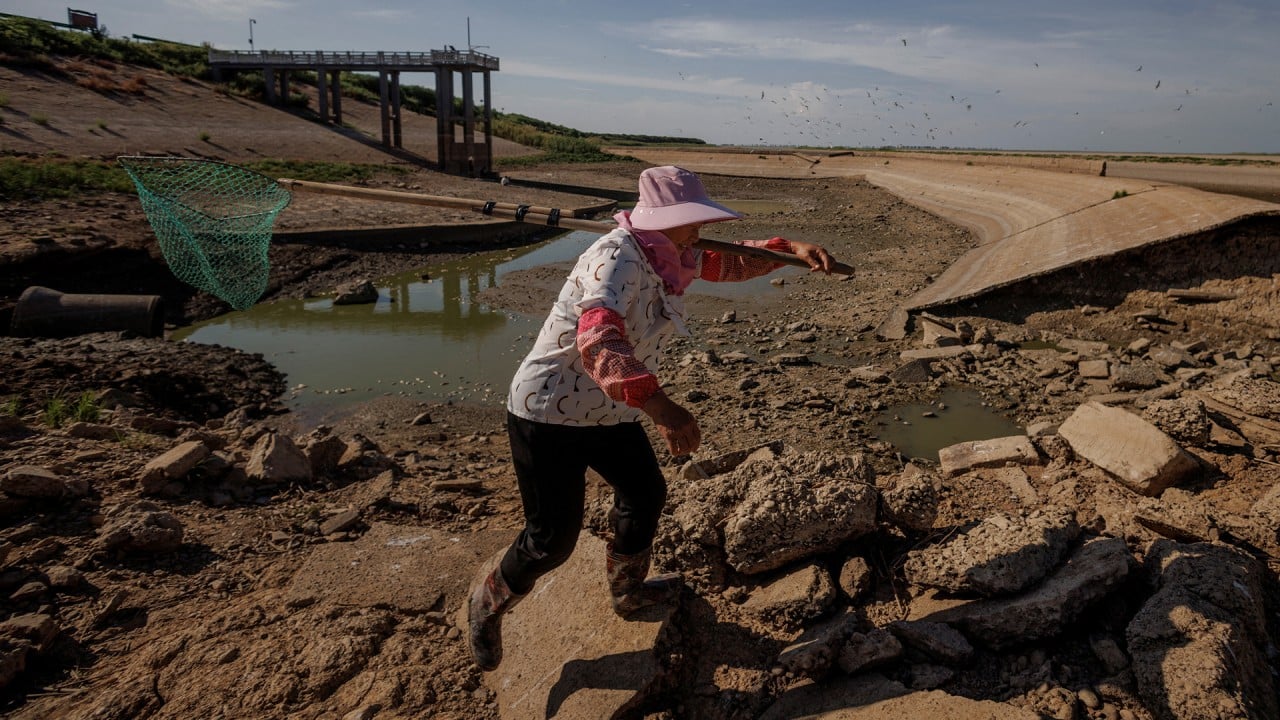
China’s Poyang Lake marks earliest dry season on record, sparking drought concerns
- Water levels at China’s largest freshwater lake fall to 70-year low for the period, raising concerns about a repeat of last year’s parched conditions
- Dry spells can affect irrigation water and drive migratory birds to artificial wetlands, raising risk of virus transmission
Located in the eastern province of Jiangxi, Poyang Lake entered its dry period on July 20, the earliest date since records began in 1951, and 17 days earlier than last year.
According to the Jiangxi hydrological monitoring centre, the water level at the Xingzi hydrological station measured 11.99 metres (39.3 feet) on July 20, the lowest for the period since records began.
Li Yankuo, a professor at Jiangxi Normal University’s college of life sciences, said he was worried about the drought this year.
“The water levels are relatively low because of less precipitation … From what I’ve seen so far, it feels like the drought is severe this year,” Li said.
More than 350 bird species have been recorded at the lake, including 23 species listed in the International Union for Conservation of Nature’s Red List of Threatened Species.
The wetland is also a winter home for about 99 per cent of the world’s critically endangered Siberian cranes and over 80 per cent of endangered Oriental white storks.
But over the past decade, it has drawn attention because of its record-low water levels in late summer and autumn.
Can China’s parched Poyang Lake still be a winter home for migratory birds?
The lake expands and shrinks due to seasonal water-level variations, from about 3,000 sq km (1,158 square miles) during the rainy season to less than 500 sq km in the dry season.
The lower water levels during the dry season from October to March leave abundant plants, fish and other food sources available for migratory birds.
However, over the past decade, the lake’s water levels have fallen faster in late summer and autumn and its dry season has lengthened.
But in the past two years, the climate’s role has grown as a cause of the lake’s early dry season, according to Li.
Last summer, China experienced its most severe drought and heatwave in six decades, sparking a hydropower shortage and affecting agricultural and industrial production.
In 2022, Poyang Lake entered its dry season on August 6, 100 days earlier than the historical average.
Plans revived for dam on Poyang Lake, cutting it off from Yangtze in dry season
Hu Zhenpeng, former vice-governor of Jiangxi province and a professor at Nanchang University, said last year’s drought in the region was the most severe since 1949.
According to Hu’s study published in the Chinese journal Drought Prevention and Relief in February, precipitation between July and October of 2022 was about one-third the average amount of rainfall for the same period over the past five decades. But evaporation was 34 per cent higher than the historical average.
The lake’s dry spell has resulted in more migratory birds stopping at artificial wetlands – lotus ponds or rice paddy fields – for food instead of natural wetlands, which may increase the risk of birds spreading viruses as they spend time closer to poultry, according to Li.
He added that drought warnings and prevention were critical.
“The negative impacts of drought are as severe as flooding. It will affect irrigation water, migratory birds and the ecosystem,” Li said.
Nanchang University’s Hu suggested building a drought early warning system to control the water levels of reservoirs, dykes and smaller lakes.
“While the global temperature keeps increasing, the frequency of severe drought similar to that of 2022 is likely to increase,” Hu wrote in the study. “We need to change our strategy from drought relief to drought prevention and mitigation.”


